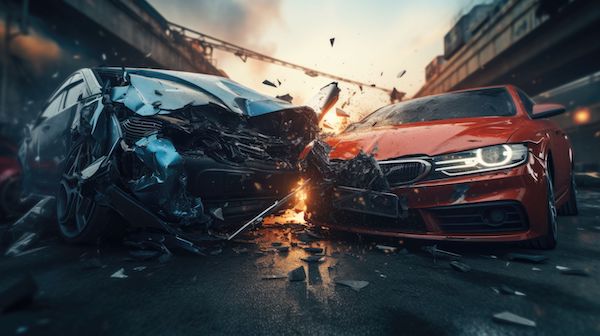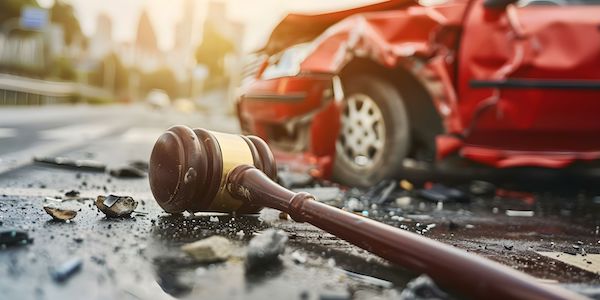How Is Liability Determined In A Car Accident: Key Factors Explained

This guide will explore the key factors that identify liability in car accidents and explain why they are important.
Legal Principles Governing Liability
Liability in car accidents is primarily determined by the law of negligence. A person is negligent when they fail to act as a reasonable person would under similar circumstances. The basic components required to establish negligence include duty, breach, causation, and damages.In the context of driving, all motorists must obey traffic laws and drive responsibly to avoid harming others. If a driver breaches this duty and that breach leads to an accident causing injuries or damages, they can be held liable for what happened.
The Role Of Evidence In Determining Fault
Evidence is pivotal in establishing who is at fault in a car accident. Some common types of evidence include:- Police Reports: Officers often respond to the scene of an accident and write a report that may include a preliminary assessment of fault based on their investigation.
- Eyewitness Testimonies: Statements from people who saw the accident happen can support claims about how the accident occurred to establish one’s liability.
- Photographs and Video Footage: Images or videos captured at the scene can help clarify the positions and conditions of vehicles and any relevant road signs or signals.
- Vehicle Damage: The location and extent of vehicle damage can indicate how the accident happened and who hit whom.
- Medical Records: These documents are crucial for linking injuries directly to the accident.
Gathering and presenting evidence effectively is essential for proving negligence. In many cases, it’s even advisable to seek the guidance of a dedicated and proven auto accident lawyer if you want a more favorable outcome for your car accident claim.

Comparative And Contributory Negligence
Comparative negligence is a legal doctrine used in most states that assesses the degree of fault of each party involved in an accident. Under this system, the compensation a plaintiff can receive is decreased by their percentage of fault. For example, if a plaintiff is deemed 30% responsible for an accident and the total damages amount to USD$100,000, they would only receive USD$70,000.On the other hand, contributory negligence, followed by only a few states, is much stricter. Under this rule, if plaintiffs are found to have any degree of fault, even as minimal as 1%, they may be completely barred from receiving any compensation. This system underscores the importance of thoroughly documenting and presenting evidence in a liability case.
The Impact Of Traffic Violations On Liability
Traffic violations can heavily influence the determination of liability in auto accidents. When a driver commits a traffic violation, such as speeding, running a red light, or driving under the influence, they can be found negligent per se. This legal concept simplifies proving negligence because the violation can be considered sufficient evidence that the driver failed to exercise reasonable care.As a result, the focus shifts from establishing negligence to demonstrating the extent of the damages caused by the negligent act. This presumption can significantly sway the outcome of legal proceedings and insurance claims, making adherence to traffic laws a critical factor in liability assessments.
No-Fault Insurance And Its Effects
No-fault insurance laws, present in several states, mandate that drivers use their own insurance policies for compensation of minor injuries after an accident, regardless of fault. This approach aims to streamline the process, reducing the need for legal action over small claims and speeding up compensation for injured parties.However, if injuries surpass a predefined severity—such as a certain threshold in medical expenses or a specific type of injury like permanent disability—affected parties may file a lawsuit against the at-fault driver. This option to step outside the no-fault system allows for recovery of greater damages when serious injuries occur.
Role Of Accident Reconstruction Experts
Accident reconstruction experts play a pivotal role in complex auto accident cases where the details of the incident aren’t clear or are highly disputed. By utilizing a blend of physics, engineering, and forensic analysis, these experts can recreate the events leading up to and during the accident. Their analyses can provide crucial insights into vehicle positioning, speeds at impact, and the mechanics of the crash, thereby clarifying issues of fault and causation. Furthermore, especially in accidents involving multiple vehicles or unusual circumstances, the testimony and reports of these experts are often key to resolving legal disputes.Conclusion
With the information mentioned above in mind, determining liability in a car accident involves understanding a complex interplay of laws, evidence, and individual circumstances. Each factor—from the adherence to traffic laws to the insights of accident reconstruction experts—is crucial in shaping the legal outcomes of accident claims. As accidents can lead to significant legal and financial consequences, consulting with an expert legal advisor can be also be critical to obtain a more positive result.Do You Need An Attorney?
If so, post a short summary of your legal needs to our site and let attorneys submit applications to fulfill those needs. No time wasted, no hassle, no confusion, no cost.

